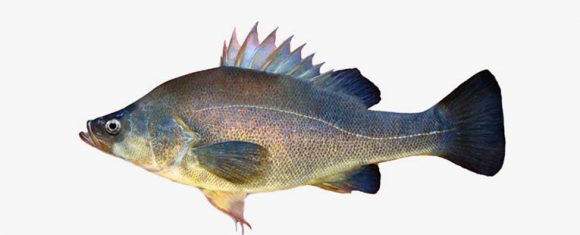Golden Perch

Golden Perch – Macquaria ambigua – also known as Yellowbelly, are found naturally in the Murray-Darling, Lake Eyre-Bulloo and Fitzroy drainages. They have also been stocked in a number of impoundments and eastern rivers in Queensland.
Genetic studies have indicated that the Golden Perch is divided into two separate species, each with two sub species. These are the Murray-Darling Golden Perch and it’s sub-species – Fitzroy Golden Perch, and the Lake Eyre Golden Perch and it’s sub-species – Bulloo River Golden Perch.
Golden Perch are known to grow to 76cm and 23kg, but are more commonly encountered at 30 – 50cm and less than 5kg. Fitzroy and Lake Eyre Golden Perch have been recorded up to 9kg. Legal minimum size is 30cm and a bag limit of 5 fish per person applies.
Golden Perch travel upstream to spawn during spring and summer flood periods. The exact timing of spawning is regulated by temperature, rises in water levels and length of the day.
Stocking
Golden Perch fingerling’s are readily available and this enabled restocking of natural watereways and an enhanced recreational fishery in Queensland’s impoundments. As a result anglers have been provided with a number of recreational fishing areas where large Golden Perch can be consistently captured.
Golden Perch stocked into impoundments will reach legal size in 12 – 15 months at a weight of 500 – 800 grams.
Angling
Golden Perch inhabit areas around weed beds, drop offs, sunken loigs and rocks, in both impoundments and rivers. This is due to the availability of reliable food sources, such as shrimp, insects, yabbies and small baitfish.
Golden Perch are aggressive predators and will readily attack surface and swimming lures, and well presented baits. Luring is particularly effective in impoundments where water clarity is good.
As well as being aggressive sportfish Golden Perch are known to be one of the best freshwater table-fish in Queensland. Their flesh is firm and white and does not hold any muddy taint that is sometimes found in other freshwater fish.
